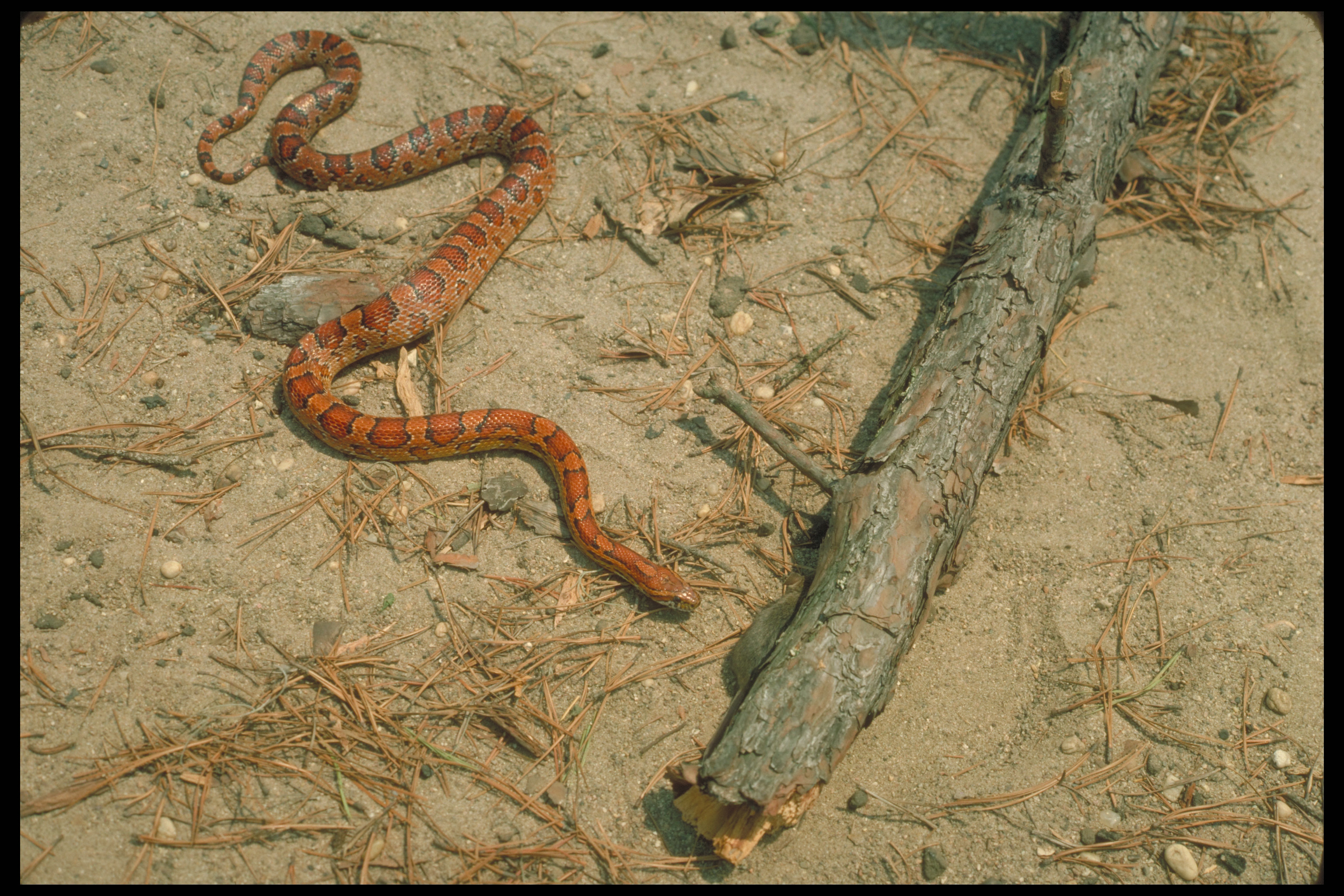
Corn Snakes
Keeping Corn Snakes
Snakes -> Corn Snakes-> Keeping Corn Snakes
There are as many ways of keeping corn snakes as there are corn snakes in captivity.
It would be wrong of me to just tell you one method and say "this is how to do it" because I wouldn't be giving you the full story on keeping corn snakes, and you may miss out on a method that is better or more practical for you.
Having said that, there is one way of keeping most common small snakes, including king snakes and milk snakes which is probably the cheapest and the easiest method of all.

My personal suggestion to you therefore is that you start with this method, then consider complicating your life a little later on when you get more experience.
But if this method is so good, then why would you want to complicate your life later on? Simply, this setup is very cheap and practical, but not very attractive to look at.
Using this simple method of keeping corn snakes, here is a shopping list of the bare minimum:
- Cage - probably the easiest to get hold of and care for over time such as when cleaning is an aquarium. A tiny 30cm x 20cm tank is ideal for baby corn snakes, whilst keeping adult corn snakes requires a cage measuring at least 90cm in length and 30 - 45 cm in depth. Some reptile suppliers also sell special hatchling snake containers that do their job very well and are also very reasonably priced.
- Lid - snakes can get through the tiniest of gaps, and it took me months of frantic searches around the house for my missing snake (which luckily I found every time, unharmed) before I realised how vital a proper lid to the cage is. When keeping corn snakes, do not simply use any old piece of wood to cover the cage, or a standard aquarium hood as you would use if there was fish in the tank. No, use a proper, ventilated lid made just for reptile keepers so you can be sure there's no chance of escape
- Heater - I would like to say that probably the best place to start when keeping corn snakes is to use a cheap, low-powered underfloor heater such as a heat mat. Simply ensure that when you place the tank ontop, only around 1/3 of the floor area of the cage is heated. This creates a "thermal gradient" where your snake can regulate it's own temperature by moving to warmer or cooler parts of the cage at will.
- Hiding Place - all snakes, including corn snakes, can be secretive in nature and it is only fair that they are entitled to hide away in captivity as they wish. Not providing such a resource when keeping corn snakes may result in undue stress which can lead to loss of appetite, weakening of the immune system and lack of interest in breeding. There are a wide range of options from special moulded snake hides as available from some pet stores, down to the two cheapest and easiest options to start out with.
The first of these is a large piece of curved cork bark, as available from most reptile stores. Being very lightweight (it will float in water) there is little chance of your snake damaging itself on it, and indeed the rough surface and can help your corn snake to remove it's skin when sloughing. Simply provide a decent sized piece so that you snake is able to crawl underneath and curl up.
The other option is to take an empty breakfast ceral box and lay it on it's side with the top torn off. It's free and does the job perfectly.
- Other Bits And Pieces - you'll also need a water bowl, some cleaning equipment kept specially for your snake tank, some reptile-safe disinfectant, some vitamin supplements and some newspaper to line the cage with.
Set up the cage by placing it no more than 1/3 on the heat pad, then line it with a few layers of newspaper to mop up spilt water and faeces.
Then take your hide and place it half on and half off the warm area so even when hiding your corn snake can thermoregulate. You'll find that corn snakes are real cage wreckers and so your carefully arranged cage won't stay that way for long. And especially with lightweight cereal boxes they are likely to be moved around by your corn snake to suit him or her.
Also, don't forget to add the water bowl to the cooler end of the cage so it doesn't all evaporate over night.
Lastly, place the lid onto the cage and turn the heater on just to check everything is working fine.
Now you're all set up for keeping corn snakes, so let's take a look at captive corn snake care.